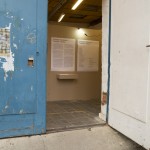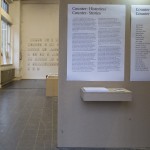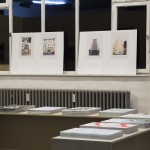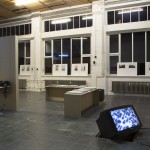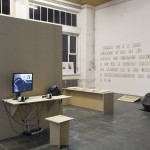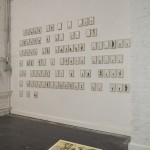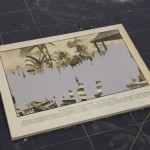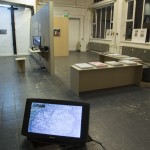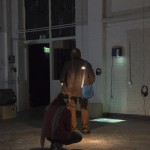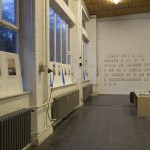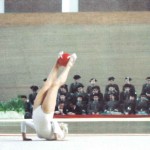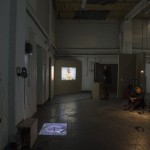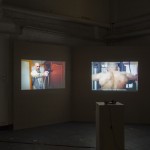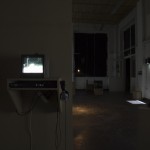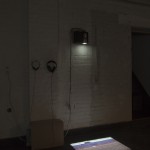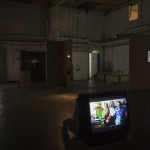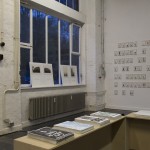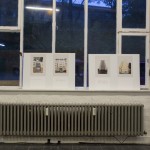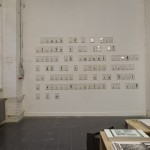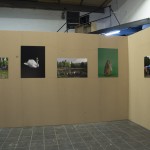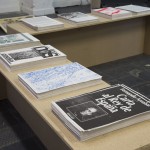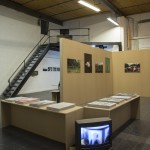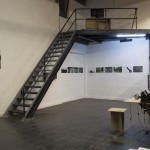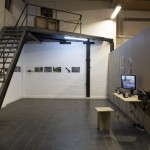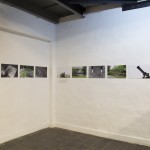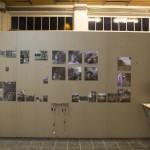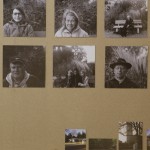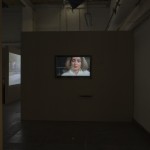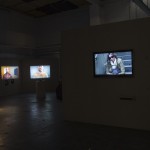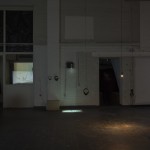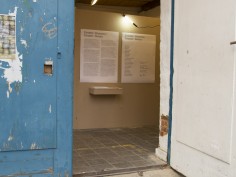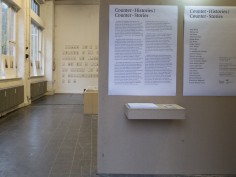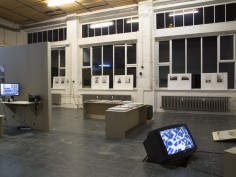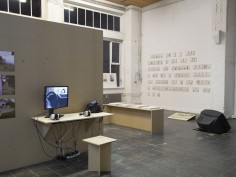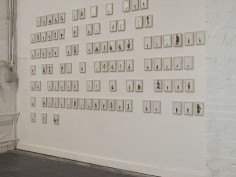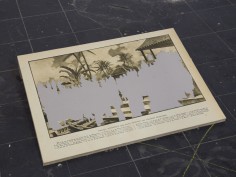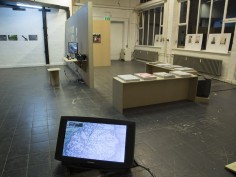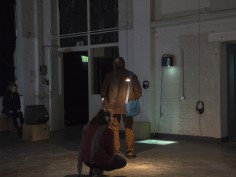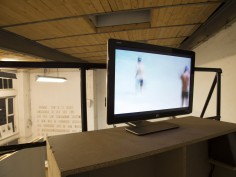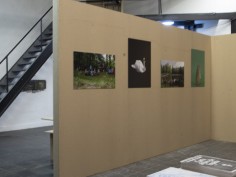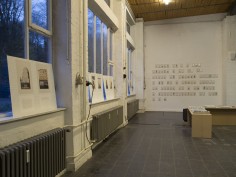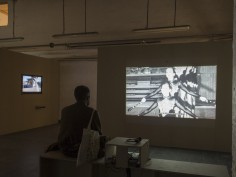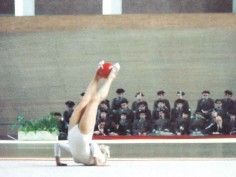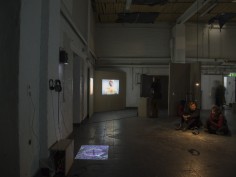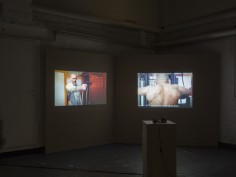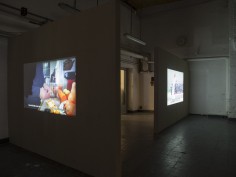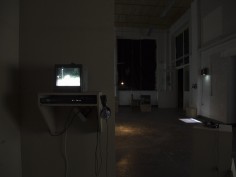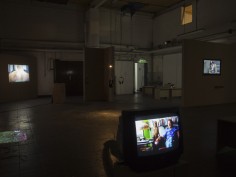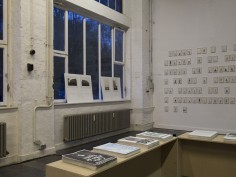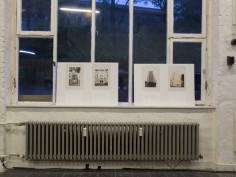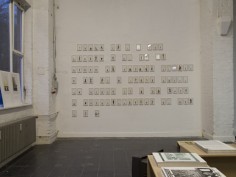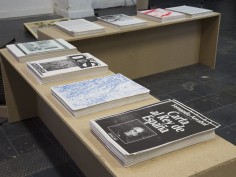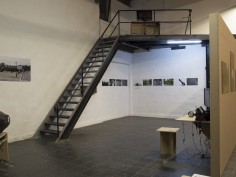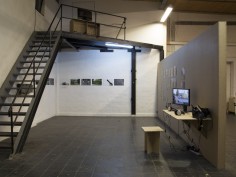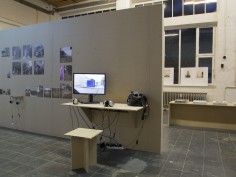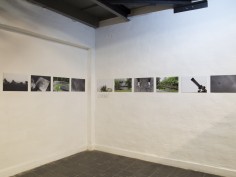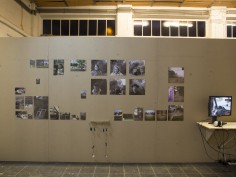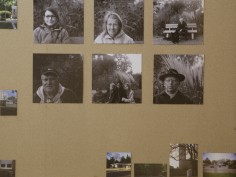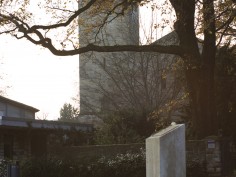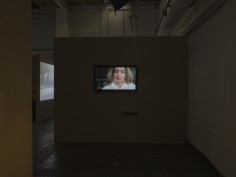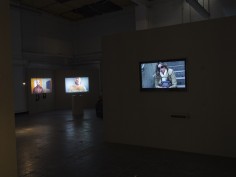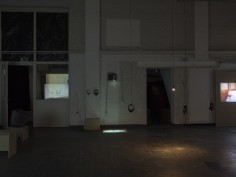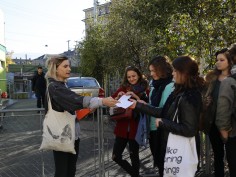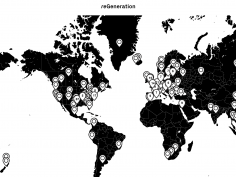exposition COUNTER-HISTORIES / COUNTER-STORIES
en collaboration avec la Klasse Film Jan Peters (ass. Volko Kamensky) de la Kunsthochschule Kassel et avec le DOKFEST Kassel, Festival pour l’art vidéo et le cinema documentaire.
Lieu: Interim, Kulturbahnhof, Kassel.
vernissage le 12. novembre à 21 heures
exposition du 13 – 16 novembre
Counter-Histories / Counter-Stories
Participating artists:
Joey Arand, Marilou Bal, Léa Favre, Valentine Franc, Sevda Güler, Jan Heise, Holger Jenss, Silke Körber, Alba Lage, Samuel Lecoq, Manon Lecrinier, Emmanuel Loisseau, Lucie Friederike Müller, Irene Muñoz, Leonor Oberson, Juliette Russbach, Tobi Sauer, Sita Scherer, Chloé Simonin, Mounia Steimer, Maximilian Wagener, Aurélie Zoss
For at least forty years the term counter-history has haunted the phraseology of those who feel their conception of history underrepresented. The common, established view of history should be opposed to a version concealed or suppressed up to now. What is seen as history should be extended by an added perspective; maybe the dominance of the ruling discourse should even be broken and leave space for this new counter-history.
A certainly accurate claim against such a notional division into “history” on the one hand and “counter-histories” on the other hand is that history, at least where it is practised as a scientific discipline, is treated as a matter of principle as polyphonic and as never finished. The field of history contains endless perspectives and can be extended with more. The main aim of historians is not – as often wrongly supposed – to preserve the knowledge of ancient ways, but rather to multiply it by critically testing the historic tradition over and over again.
Has the term counter-histories finally become obsolete, because the plurality of perception of history and quality of its research is well supported by the scientific research of historians? For sure, a shift of perspectives from history as a scientific discipline in the direction of the media world helps. Since the exhibition takes place in Germany, we’re focusing on what can be understood here as the common contemporary concept of history. Without wishing to make Guido Knopp and the ZDF (second German television channel) even more important than they already are, a closer look at the success of the “Zeitgeschichte” (time history) editorial team shows the dominance of a certain idea of history and especially a methodical treatment of historical and contemporary sources. Even if this seems to run counter to the democratic mission of public-service broadcasting, the variety of views on history doesn’t seem always to be guaranteed.
What stands more to reason, than to raise attention with different methods, formats and questions and to broaden the common view of what is understood as history with an additional (even if just personal) one? The counter-stories developed could quickly rise or go down in this understanding of history. But they are needed at all times, especially in times when majorities feel so cosy in their consensus that they can barely imagine that the world could be understood and experienced in a completely different kind of way.
The extent to which artists and filmmakers can take part in a way of writing history and even broaden it with their (hi)stories, was the question of two groups of students of the HEAD (University of art and design) in Geneva and the Art University of Kassel. From the start of the winter semester 2013, they worked in the programme “Information/fiction” (Prof. Bruno Serralongue, Prof. Frank Westermeyer, Bénédicte Le Pimpec and Prof. Pascal Beausse) at HEAD and in the class “Film and Moving Image” at the Art University of Kassel (Prof. Jan Peters and Volko Kamensky) on the subject of counter-(hi)stories. Beside a constant exchange about the status of the projects on both sides, they worked together once in Geneva and once in Kassel for about one week and realised numerous individual projects in the following months.
You can see this diversity of voices of history in the spectrum of the works created. In the following descriptions you find an exemplary choice of the works.
Marilou Bal’s thesis is to understand putative historical artefacts and not only the writing of history as a construction. In her installation “The authentic story of a dwarf bookcase” she explores acoustically the workshop of a forger, and in the work, she herself incarnates the voices of a British antiques forger and her American buyer and dealer. The dialogue between the two women is a clever arrangement in layers of counterfeit and forgery, full of precise descriptions of Regency style furniture and saturated by the ostentatious belief in the possibility of genuineness against better judgement.
Thus you could see posters with the words “We are a world heritage” all over Kassel not long ago, just after the hill park Wilhelmshöhe was declared a UNESCO Cultural Heritage site. But what exactly is hidden behind the term “cultural heritage”? Who are the people who receive that heritage? And what motivations lie behind it? What is the role of time, tradition, memory and forgetting? Tobi Sauer questions this and more in twelve associatively connected chapters – from the small sister of the Grimm brothers to Orwell’s Big Brother.
Sita Scherer equally choses Kassel as starting point for her two-part work, which she presents under the independent titles “Fading” and “Food from the ground of history”. “Fading” explores a picture found in a library – a track to be followed: For an air show in 1933, the Nazis built the scenery of the old town of Kassel, to “let it die under bombs”, as a contemporary daily newspaper wrote. The search for reasons, places and relics leads into the industrial area “Waldau West”. As fragmentary as the memory of history, the images of the film assemble themselves. Nevertheless, the camera succeeds in bringing out relics of a fading history, which no one really seems to want to remember. The growing distance of time from the event is faced with the proximity of the location. The industrial park “Waldau West” is only four kilometres south of Kassel town centre. It’s on the compound of the old airport Kassel-Waldau, which was used as the factory airfield of the plane construction company Fieseler. This so-called “National-Socialist model company” built several military aircraft and developed the V1. It used thousands of Dutch and French slave labourers. Today, apples, berries and mushrooms overgrow the old paths. Sita Scherer’s “Food from the ground of history” starts out from the paradoxical idea that every soil holds history and this can be eaten in form of the fruits, no matter how destructive it was before.
Chloé Simonin and Manon Lecrinier used archives as well. In their research they found the “Atlas colonial français” and in it the “Tableau d’ensemble des races peuplant les colonies françaises”[1] from 1929. This collage of photographs shows the inhabitants of the many French colonies and portrays them fictionally together, unified by their colonial ruler. Simonin’s and Lecrinier’s intervention consists in the reversal of the common approach of historians: instead of putting occasions and people into a (historical) interdependence, they precisely separate the portraits of the oppressed just to give each back his individual place. You can even read it like this: what now remains is on the one hand a context falling to pieces (the background) and on the other hand portraits of individuals, who now need to be newly contextualised topographically. The history of colonialism can only be a story of construction and deconstruction, reconnection and dissolution.
Joey Arand’s video with the title “Victoire” portrays the Réunionnaise Nathanaëlle Victoire and explores small references of colonial history and global migration. As is typical for the inhabitants of the small French island of La Réunion in the Indian Ocean, Nathanaëlle Victoire’s ancestors originate from several countries in three continents. Details of her clothes, handbag, and jewellery seem to give a glimpse of the connections of her family tree’s specific branches. It is an attempt to read a family history in clothes and to define social wealth through the diversity of the origins of the individual members. A calm, almost peaceful film in the face of the enormous historical movements to which it points.
Change of scene: Kassel, 06.04.2006. Two right-wing extremists kill Halit Yozgat in his Internet café. He was the ninth victim of a series of murders by neo-Nazis, which became known in the media as the “Doner Kebab murders”. To solve these murders, a special investigative team was created, with the – as later realised – misleading name “Bosphorus”. The backgrounds, in particular the role of the Federal Office for the Protection of the Constitution, are still to some extent unresolved. In her work, Sevda Güler deals with the memorial place and stone, which are close to the scene of the crime. She explores the environment and tries to find a personal connection to the memory, by singing about the memorial stone in her film installation “Bulletproof”. It’s not so much a critical essay on the blunders of the criminal inquiry as the expression of discomfort at the blind and deaf approach of a whole society to a crime.
It is well known that history is not only written by historians, but arises in trials, too, for example at the International Court of Justice or in the Nuremberg trials. Historiography itself is on trial, too, from time to time. The collective of curators “Le peuple qui manque” staged one of those court cases with the project participants of Geneva. In the dock: the French author Yannick Haenel. He stirred up a remarkable polemic with his book Jan Karski. Karski, a messenger of the Polish resistance from 1942 to 1943, was chosen by the Jewish Labour Party and the Zionists to report to the world public the state of the Warsaw ghetto and the Nazi concentration camps. Haenel takes the liberty of breaking Karski’s silence about Eisenhower’s absence of reaction by a fiction and putting invented words in Karski’s mouth. The accusation is mainly based on Claude Lanzmann’s criticism of Haenel’s approach, which was published immediately after the book’s release in the French daily Le Monde. Both curators of “Le peuple qui manque” developed with the students scripts for accusation and defence. The trial, performed by the students, took place in Geneva on the 21th February of 2014 and is captured in a 90-minute long video.
Every four years, the IOC president reminds us that sport is not a political event. But it’s hard to separate the history of sport from political history. Sport events can even exemplarily explore political situations. Irene Muñoz’ video “La Vague” does so: In the library of the IOC in Lausanne, she found a photograph of a gymnast. In front of the gymnast: the frowning functionaries of the Guardia Civil, Franco’s internal army. The image was taken at the world championship in floor exercises in Barcelona in 1974. The four days of competition are less in the Spanish collective memory than Franco’s death (first day of competition), his laying-out (second day) and finally his funeral the fourth and last day of the competition. “La Vague” is the reflection of a young Spanish woman on the awakening from a dictatorship by her parents’ generation. She confronts the intellectual and political numbness with an associative reflection, Franco’s dead, rigid body with the gymnasts’ flexibility.
The progressive approaches to writing the history of society instead of the history of individuals (especially men), are being suppressed once more by the media society. The same in the Tunisian Spring, where it foregrounds single hero-stories, regardless of the real influence on the incidents. The orange seller poured petrol over himself and maybe set fire to himself on 17.12.2010. Later doubts about the suicide and political motivation came up. Mounia Steimer’s video essay “Confiture d’orange” connects that incident to her own (bitter) history: Her more than 70-year-old father with Tunisian origins, formerly a socialist activist, travelled back to his home country three years after Ben Ali’s downfall and decades of personal exile. Back in Tunisia, he didn’t find the freedom he once fought for. Salafists had destroyed the mausoleum where his family is buried, shortly before his arrival. Only the orange trees were still intact. Steimer’s father picked several kilos of oranges and took them with him back to Lausanne, where he cooked a big pot of marmalade for each of his four children. Whether it conserves bitter or sweet memories, is up to the viewer.
[1] “Table of races living in the French colonies”

